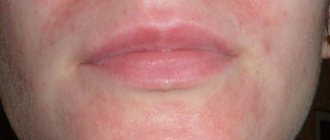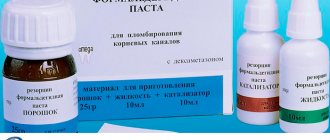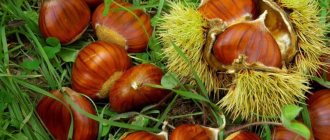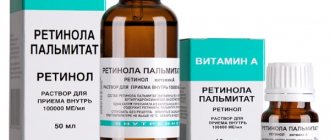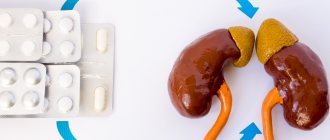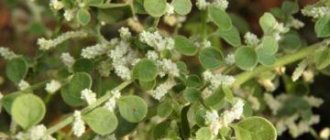pharmachologic effect
Noofen is a pharmaceutical drug related to nootropics that activate brain functions. The active ingredient is aminophenylbutyric acid hydrochloride. Nootropics give brain neurons resistance to stress, damage, toxic substances, oxygen deficiency and revitalize brain functions (learning, memory, cognitive functions).
Noofen is known for its effect, which simultaneously activates and calms the brain, relieves anxiety, improves sleep, and helps cope with diseases associated with nervousness.
Use of the drug Noofen
Inside before meals. The course of treatment is 4–6 weeks. Adults are prescribed 250–500 mg 3 times a day. If necessary, the daily dose is increased to 2.5 g. Children under 3-4 years of age are prescribed 100 mg 2 times a day, 5-6 years old - 100 mg 2-3 times a day, 7-10 years old - 100 mg mg 3-4 times a day, 11-14 years old - 200 mg 2-3 times a day. Children over 14 years old - adult doses. Highest single doses: for adults - 750 mg, for persons over 60 years old - 500 mg, children under 6 years old - 100 mg, 7-10 years old - 200 mg, 11-14 years old - 300 mg. Noofen can be combined with other psychotropic drugs, this increases its effectiveness, and the dose of Noofen and other concomitantly used drugs can be reduced. To relieve alcohol withdrawal syndrome, Noofen in the first days of treatment is prescribed 250–500 mg 3 times during the day and 750 mg at night, with a gradual reduction in the daily dose to the usual dose for adults. To eliminate dizziness due to dysfunction of the vestibular analyzer of infectious origin (otogenic labyrinthitis) and Meniere's disease, Noofen is prescribed during an exacerbation, 750 mg 3 times a day for 5-7 days, with a decrease in the severity of vestibular disorders - 250-500 mg of the drug 3 times a day day for 5–7 days and then - 250 mg 1 time per day for 5 days. For relatively mild diseases, Noofen is taken 250 mg 2 times a day for 5–7 days, then 250 mg 1 time a day for 7–10 days. To eliminate dizziness due to dysfunction of the vestibular analyzer of vascular and traumatic origin, Noofen is prescribed 250 mg 3 times a day for 12 days. To prevent motion sickness during sea navigation, a dose of 250–500 mg is prescribed once, 1 hour before the expected start of motion sickness or when the first symptoms of seasickness appear. The effect of Noofen during motion sickness increases with increasing dosage of the drug. When severe manifestations of seasickness occur (vomiting, etc.), oral administration of Noofen is ineffective even in doses of 750–1000 mg. To prevent air sickness, Noofen is prescribed as a single dose of 250–500 mg 1 hour before the flight. For complex treatment of women with osteochondrosis of the cervicothoracic spine and menopausal disorders, Noofen is prescribed 250 mg 3 times a day for the first 2 weeks, in the next 2 weeks - 250 mg 2 times a day. In case of moderate severity of vertebrogenic pain syndrome and menopausal disorders, it is recommended to use Noofen at a dose of 250 mg 2 times a day daily for 4 weeks of complex treatment of osteochondrosis. If the next dose is not taken on time one or more times, then the course of treatment should be continued at the previously used dose.
Indications for use
Medicine is prescribed to treat the following symptoms and diseases:
- weakness and asthenia - poor performance;
- neuroses are accompanied by fears and increased anxiety;
- sleep disorders and night terrors (usually applicable to older patients);
- tics, stuttering, bedwetting (usually applicable to children);
- increased intraocular pressure - glaucoma (in some cases);
- motor dysfunction, vestibular system disorders, including Meniere's disease;
- nausea (motion sickness) - prevention of motion sickness;
- after head injuries and strokes - restoration of neurons;
- autonomic disorders, including vegetative-vascular dystonia;
- preparing patients for painful operations;
- treatment of alcoholism and hangover (as part of a combination of drugs);
- epilepsy and Parkinson's disease in some cases.
Pharmacological properties of the drug Noofen
is a derivative of γ-aminobutyric acid and phenylethylamine (γ-amino-β-phenylbutyric acid hydrochloride). Its dominant antihypoxic and antiamnestic effect is. Has tranquilizing properties, stimulates memory and learning, increases physical performance; eliminates psycho-emotional tension, anxiety, fear and improves sleep; prolongs and enhances the effect of sleeping pills, narcotics, neuroleptics and anticonvulsants. Does not affect cholinergic and adrenergic receptors. The drug lengthens the latent period and shortens the duration and severity of nystagmus, and has an antiepileptic effect. Noticeably reduces the manifestations of asthenia and vasovegetative symptoms, including headache, a feeling of heaviness in the head, sleep disturbance, irritability, emotional lability, and increases mental performance. Indicators of higher nervous activity (attention, memory, speed and accuracy of sensory-motor reactions) under the influence of Noofen improve, unlike tranquilizers. In patients with asthenia and in emotionally labile patients, from the first days of therapy with the drug, their well-being improves, their interest and initiative, and motivation for vigorous activity without sedation or agitation increase. When used after a traumatic brain injury, it increases the number of mitochondria in the cells of perifocal tissues and improves the bioenergetics of the brain. In the presence of disturbances in the activity of the heart and stomach, Noofen normalizes lipid peroxidation processes. It is well absorbed after oral administration and penetrates well into all tissues of the body, penetrating the BBB. After 3 hours, phenibut is detected in the urine, at the same time the concentration of the drug in the brain tissue does not decrease, it is detected in the brain after another 6 hours. The next day after administration, phenibut can only be detected in the urine; it is determined in urine 2 days after administration, but the detectable amount is 5% of the administered dose. The greatest binding of phenibut occurs in the liver (80%) and is not specific. With repeated administration, cumulation is not observed.
Application and dosage
The powder must be dissolved in half a glass of water and taken before meals.
Children 3-4 years old are prescribed 1 sachet twice a day; Children 5-6 years old should take 1 pack. three times a day; 7-10 years – 2 packs. twice a day; 11-14 years old – 2 packs. three times a day.
Adolescents over 14 years of age and adults are prescribed Noofen in capsules or tablets of 250 mg.
The course of treatment ranges from 2 to 6 weeks.
To prevent motion sickness, you should take Noofen an hour before your trip.
Indications for use of the drug Noofen
Decreased intellectual and emotional activity, memory impairment, decreased concentration. Asthenic and anxious-neurotic states, restlessness, fear, anxiety, obsessive-compulsive neurosis, psychopathy; in children - stuttering, enuresis, tics; in older people - insomnia, night restlessness. Prescribed for the prevention of stress, before operations or painful diagnostic tests. Noofen is used as an adjuvant in the treatment of alcoholism to relieve psychopathological and somatovegetative disorders during withdrawal syndrome. The drug can be used in conjunction with generally accepted detoxification agents for the treatment of alcoholic predilection and delirium. It is also prescribed for Meniere's disease, dizziness associated with dysfunction of the vestibular apparatus, and for the prevention of motion sickness. It is used in the complex treatment of women with osteochondrosis of the cervicothoracic spine and menopausal disorders. The use of Noofen in the post-traumatic period increases the number of mitochondria and improves the bioenergetic processes of the brain.
Noofen
Noofen (aminophenylbutyric acid hydrochloride) is a nootropic drug with anxiolytic (anti-anxiety) activity and tranquilizing properties. Shows neurometabolic, psychostimulating, antihypoxic, antioxidant effects. Improves cognitive functions (memory, attention, concentration, mental activity, intelligence). Increases the adaptive abilities of the brain and resistance to negative external influences. Improves tolerance to physical activity, increases mental performance. Improves sleep quality. Potentiates the effects of sedatives, tranquilizers, neuroleptics and antidepressants. Noofen is also used as an adjuvant in the complex pharmacotherapy of menopausal disorders, incl. in combination with degenerative-dystrophic lesions of the cervicothoracic spine. The drug has a vegetative stabilizing effect and affects the symptoms of early menopause - it reduces asthenic manifestations, eliminates headaches, increased irritability, somnological disorders, and mood swings. The use of Noofen in such cases can significantly improve the patient’s quality of life. The drug also helps with traditionally “male” problems, for example, erectile dysfunction. As you know, with age the risk of erectile dysfunction increases significantly. A significant share in the overall structure of morbidity is due to erectile dysfunction of a psychogenic nature. The reason for this is the increased neuroticism of society. The complexity of the situation is that none of the traditional methods of treatment can have a positive effect on eliminating the powerful suppressive psychogenic effects, and the use of benzodiazepines in such cases can only aggravate the situation, i.e.
because one of their side effects is decreased libido. In recent years, patients of this profile have successfully used Noofen, which eliminates increased tension and phobias, and dispels anxiety. In one of the clinical studies conducted in patients with erectile dysfunction of a psychogenic nature, the drug showed almost one hundred percent effectiveness, while before treatment, the participants' erectile dysfunction was half as strong. The participants had an improved ability not only to initiate, but also to complete sexual intercourse, an increased sense of satisfaction with life and improved quality of life. According to studies, in mature patients, atherosclerosis is more aggressive and metabolic disorders are more pronounced, resulting in an increased risk of stroke. Among metabolic disorders, gamma-aminobutyric acid metabolism disorder plays an important role. Noofen, which has a GABAergic effect, helps normalize this dysfunction. Research results demonstrate the positive effect of Noofen on cerebral circulation, its ability to improve memory and attention, and reduce the risk of developing depression. After oral administration, the drug is well absorbed from the gastrointestinal tract. Noofen has good penetrating ability, being distributed in all tissues, including the brain. With regular use, the drug does not accumulate in the body. Noofen is widely used in pediatric practice for speech disorders, motor and other tics, and bedwetting. For elderly patients, the drug is prescribed for sleep disorders and anxiety. Noofen is also in demand for motion sickness syndrome.
Special instructions for the use of the drug Noofen
Caution should be exercised when prescribing to patients with pathologies of the digestive tract due to the irritating effect of Noofen. These patients are prescribed the drug in reduced doses. With long-term use, the cellular composition of the blood and indicators of functional liver tests are monitored. Use during pregnancy is undesirable, as there are insufficient observations to confirm its safety. Patients who experience drowsiness, dizziness or other central nervous system disorders should not drive vehicles or operate potentially dangerous machinery during treatment.
Overdose of the drug Noofen, symptoms and treatment
Noofen is low-toxic; only in a daily dose of 7–14 g, with long-term use, it can have a hepatotoxic effect. These doses significantly exceed the recommended (average therapeutic daily dose - 0.75–2.5 g). Only at the highest dose used, eosinophilia and fatty liver were sometimes observed. There were no such changes at lower doses. The clinical picture in case of overdose is dominated by drowsiness, nausea, vomiting, and the development of hypotension and renal failure is possible. In case of poisoning, gastric lavage is performed, activated charcoal is prescribed, and supportive and symptomatic therapy is carried out.

